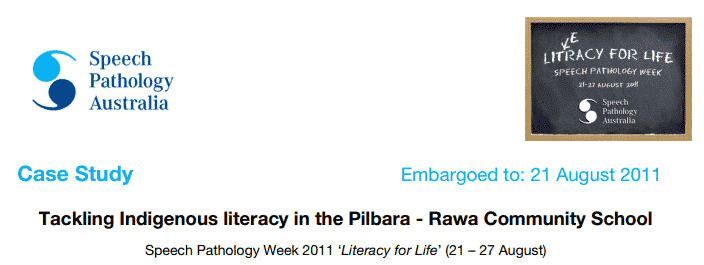Implementing in Remote Schools
Many remote schools across Australia operate under significant challenges, including limited access to support services, irregular student attendance, high rates of chronic ear health issues among students, and English often being a second, third, or even fourth language. PLD’s evidence-based SSP programs are designed to directly address these barriers by building strong foundations in oral language, listening skills, and phonemic awareness.
Case Study Highlight: In 2011, a Speech Pathology case study at Rawa Community School in WA’s Pilbara region demonstrated the effectiveness of PLD’s approach. Through structured lesson sequences and short, daily teaching blocks, students progressed from non-readers to functional readers. These literacy gains were both rapid and sustained, despite the complex challenges of the remote setting.
Navigate to the relevant sections using the tabs below:
The Early Years and Foundation Teaching Sequences, supported by the Ultimate Starter Packs, provide targeted programs that build oral language and phonics skills, with a focus on blending, segmenting and alphabet sound recall – key prerequisites for reading and spelling. The outlined teaching sequences can be adapted to align with students’ skill acquisition. In many cases, additional time and support may be necessary to address low entry levels or the impact of irregular attendance.
Two online courses will be required: the Year 1 & 2 Online Course and the Pre-CVC and Early Stage 1 Skills Online Course.
These courses equip educators with the knowledge to support both ends of the learning spectrum: students who are progressing well, and those who have yet to begin reading, spelling, and writing and require pre-literacy skill development. The accompanying teaching and screening manuals provide comprehensive guidance for addressing the needs of both groups within the classroom.
Two online courses are recommended to support effective literacy instruction. The Implementing SSP in Years 3, 4, 5 & 6 Course (covering PLD’s Stages 1 – 6) is essential for classroom-wide implementation. In addition, if there are students who are yet to begin reading, spelling, or writing, the Pre-CVC and Early Stage 1 Skills Online Course online course is also recommended to build foundational pre-literacy skills.
PLD makes structured literacy simple, practical, and effective – even in small rural and multi-age classrooms. See how PLD can transform literacy in your school.
- What is PLD? Evidence-based programs proven to lift outcomes.
- See it in Action: Watch our lesson block demonstration videos to see SSP using PLD in action.
- Tailored for Your School: Request a quote to match your school’s needs and budget.
- Resources: Use our audit form to plan what is needed for each stage of learning.
For schools new to PLD, by filling out the form below, you can request cost estimates for training and essential programs. Subsequently, a quote will be sent to the provided email address (typically within 48 hours) Following this, a complimentary 30-minute consultation will be scheduled to further discuss and tailor the quote to meet the specific requirements of the school.
The implementation of PLD can be initiated at any point during the school year. We provide a 5 step process that is adapted to different times within a school year.
Step 1: Register for and set up the PLD tracking sheets
Step 2: Delivery of a minimum of a half day of training
Step 3: Administer and mark placement tests
Step 4: Enter results and process the PLD tracking sheets
Step 5: Contact the PLD office for further support
Click on the button below for the detailed instrtuctions linked to each commencement period in the school year.




















